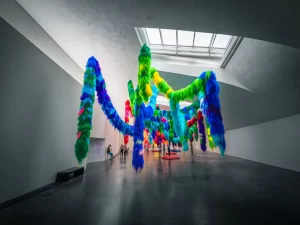Decoding the Symbolism in Portuguese Literature Over the Ages
Portuguese literature is a tapestry woven with threads of history, culture, and diverse influences. Symbolism is a crucial tool used by writers to express deep meanings and social commentary. In order to unravel the symbolic tapestry of Portuguese literature, this article will take the reader on a trip through three generations.
Introduction:
Portuguese literature boasts a rich history, mirroring the cultural evolution of the nation across centuries. Symbolism emerges as a powerful vehicle for authors to express deeper emotions and address societal issues. We’ll explore the use of symbolism in different historical periods, shedding light on its evolving nature.
Medieval Period (12th-15th Centuries):
Symbolism in Cantigas de Amigo:
In the medieval era, the “Cantigas de Amigo” showcases symbolism through natural elements, colors, and religious imagery. These symbols convey intricate emotions of love, longing, and separation, creating a poetic landscape rich in meaning.
The Lusiads:
Moving into epic poetry, “The Lusiads” symbolically represents Portugal as a heroic nation destined for greatness. Mythical figures and epic journeys serve as allegories, encapsulating the national identity and destiny.
Allegorical Morality Plays:
The use of symbolic characters and narratives in Allegorical Morality Plays transcends entertainment. These plays became vessels for moral lessons and religious teachings, embedding deeper meanings within the dramatic tapestry.
Renaissance Period (16th-17th Centuries):
Camões’ Sonnets:
During the Renaissance, Camões’ sonnets delve into Petrarchan conceits and metaphors. These symbols become tools to explore themes of love, beauty, and mortality, adding layers of complexity to his poetic expression.
Gil Vicente’s Autos:
Gil Vicente employs symbolic characters and stage directions in “Autos” to satirize social and political issues. This marks a shift in symbolism from the personal to the societal, reflecting the spirit of the age.
Symbolism in Religious Literature:
In religious literature, symbolism enhances faith and devotion, notably in the works of António Vieira. Symbolic elements deepen spiritual reflections, connecting readers to profound layers of meaning.
Romanticism and Realism (18th-19th Centuries):
Almeida Garrett’s Use of Gothic Symbolism:
Almeida Garrett employs Gothic symbolism to represent fear, death, and the supernatural. Through symbolism, he explores the darker aspects of human existence, creating a nuanced literary experience.
Realist Literature:
Realist literature utilizes symbolism to depict social problems and the harsh realities of life. Symbolic elements become windows into societal issues, inviting readers to contemplate and engage with pressing concerns.
Symbolism in Poetry:
Romantic poets like Sophia de Mello Breyner Andresen and Cesário Verde employ symbolism in poetry to express personal emotions and explore philosophical themes. Symbolic language becomes a vehicle for introspection and philosophical inquiry.
Modern and Contemporary Literature (20th-21st Centuries):
Fernando Pessoa’s Heteronyms:
In the modern era, Fernando Pessoa’s heteronyms introduce a unique form of symbolism. Each literary personality represents a distinct symbolic perspective, offering readers a multi-dimensional exploration of the human experience.
José Saramago’s Magical Realism:
José Saramago employs magical realism, using symbolism to blur the lines between reality and fantasy. Political and philosophical implications are woven into the fabric of his narratives, challenging readers to question the nature of existence.
Contemporary Symbolism:
Contemporary authors utilize symbolism to tackle current social issues, explore identity, and express individual experiences. The symbolism of today reflects the complex and diverse tapestry of modern Portuguese literature.
Conclusion:
In conclusion, the evolution of symbolism in Portuguese literature is a journey through time, reflecting the changing tides of societal and cultural influences. Symbolism remains a vital tool for enriching literary interpretation and understanding the context of different periods. As we decode the symbols, we gain insights into the heart and soul of Portuguese literature.
Key Takeaways:
- Medieval (12th-15th Century) – Love, destiny, religious allegories
- Renaissance (16th-17th Century) – Petrarchan conceits, societal satire
- Romanticism and Realism (18th-19th Century) – Gothic symbolism, societal critique, philosophical exploration
- Modern and Contemporary (20th-21st Century) – Multiple perspectives, magical realism, social commentary
FAQs:
Q: How did symbolism evolve from the medieval to contemporary periods?
A: Symbolism transitioned from personal and emotional expressions in medieval literature to broader societal critiques and diverse perspectives in modern and contemporary works.
Q: What role did religion play in the use of symbolism in Portuguese literature?
A: Religious symbolism was significant, enhancing faith and devotion in medieval and Renaissance literature. However, its prominence diminished over time, making room for broader thematic explorations.
Q: How did symbolism contribute to the understanding of societal issues in Realist literature?
A: Symbolism in Realist literature served as a lens through which authors depicted and critiqued social problems, poverty, and the harsh realities of life, fostering a deeper understanding among readers.


